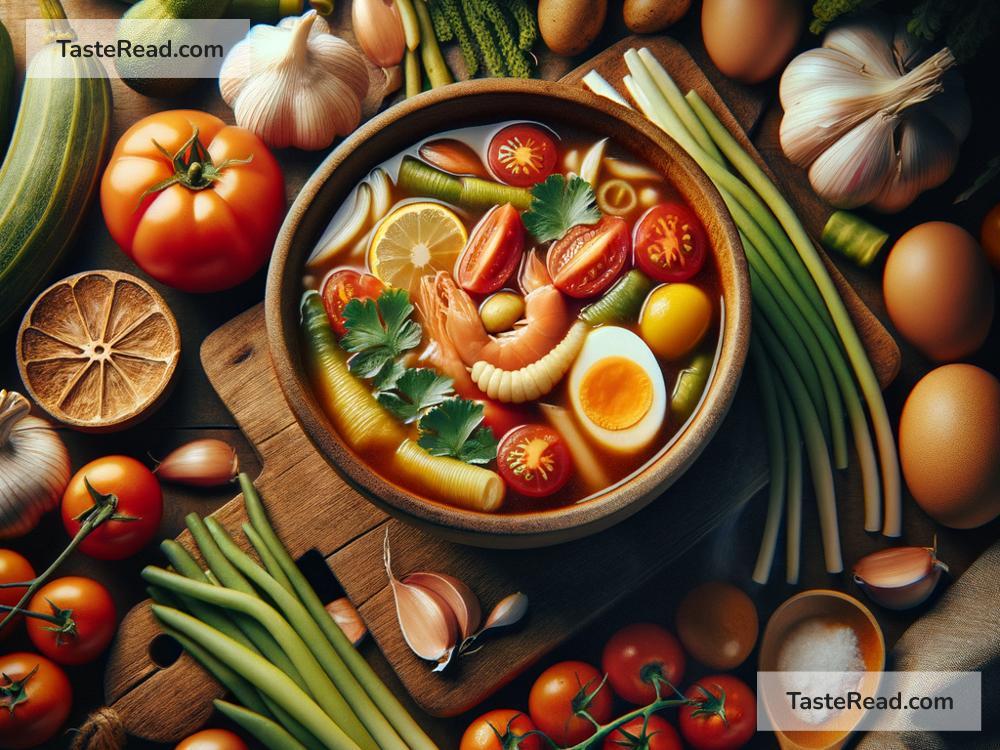How the Filipino Sinigang Became a Comfort Dish
In the heart of the Philippine islands lies a dish that has warmed the hearts and homes of many—Sinigang. This savory, tamarind-based stew is a staple in Filipino cuisine and has rightly earned its place as a beloved comfort food among Filipinos, both in their native country and across the globe. But what exactly makes Sinigang a comfort dish? Let’s delve into the journey of Sinigang, exploring its roots, evolution, and the secret ingredients that make it a heartwarming meal.
The Historical Brew
Sinigang’s story dates back to before the Spanish colonization of the Philippines, a testimony to its deep-seated heritage in Filipino culture. Traditionally, it is a sour soup that derives its distinctive flavor from tamarind (sampalok), although variations using guava, green mango, or calamansi as the souring agent also exist. The main ingredients include pork, beef, or seafood, mixed with a variety of local vegetables like water spinach (kangkong), radish (labanos), eggplant (talong), and string beans (sitaw).
This dish is more than just a recipe passed down through generations; it is a vessel of history and tradition, reflecting the abundance and diversity of the Philippines’ natural bounty. Sinigang’s adaptability to different souring agents available in various regions demonstrates the resourcefulness and ingenuity of Filipino cooks over the centuries.
A Symphony of Flavors
Part of what makes Sinigang a comfort dish is its perfectly balanced symphony of flavors. The soup’s sourness stimulates the appetite, while the variety of vegetables add sweetness and texture to the dish. When combined with either the tenderness of pork, the richness of beef, or the freshness of seafood, Sinigang transforms into a hearty meal that satisfies both the stomach and soul.
For many Filipinos, the act of sipping and savoring the warm broth brings back fond memories of family gatherings, rainy days, and the simple joys of home-cooked meals. It’s a taste of home, no matter where in the world they might find themselves.
The Warmth of Comfort
What exactly is comfort food? At its core, comfort food is any dish that provides a nostalgic or sentimental value to someone. It’s the food that reminds you of family, of home, of simpler times. Sinigang, with its rich history and soul-soothing properties, fits this definition to a T.
On cool, rainy days, a bowl of hot Sinigang serves as the perfect antidote to the chill. Its warmth envelops you, chasing away the cold and wrapping you in a cocoon of comfort. But beyond the physical warmth, Sinigang’s ability to evoke memories of family dinners and celebrations makes it emotionally comforting as well.
Recipe for the Soul
The process of making Sinigang is, in itself, a labor of love. Preparing it involves a delicate balance of ingredients and patience to achieve the perfect taste. Families often have their own versions or secret ingredients, making each bowl of Sinigang unique.
This dish teaches the value of simplicity and attention to detail. It shows that creating something heartwarming doesn’t require complex techniques or exotic ingredients; sometimes, all it takes are basic elements combined with care and affection.
Conclusion
Sinigang has woven itself into the fabric of Filipino culture, becoming more than just a culinary dish—it is a cultural emblem of comfort, heritage, and unity. Its sour broth, rich in flavor and tradition, carries the essence of the Philippine islands and the warmth of its people.
As Filipinos continue to share their cuisine with the world, Sinigang remains a testament to the timeless allure of comfort food. It embodies the comforting embrace of home, making it a beloved dish among those who’ve tasted its unique blend of flavors. So, the next time the skies gray and the rain begins to pour, know that a pot of Sinigang might just be the warmth you need to chase the cold away.


